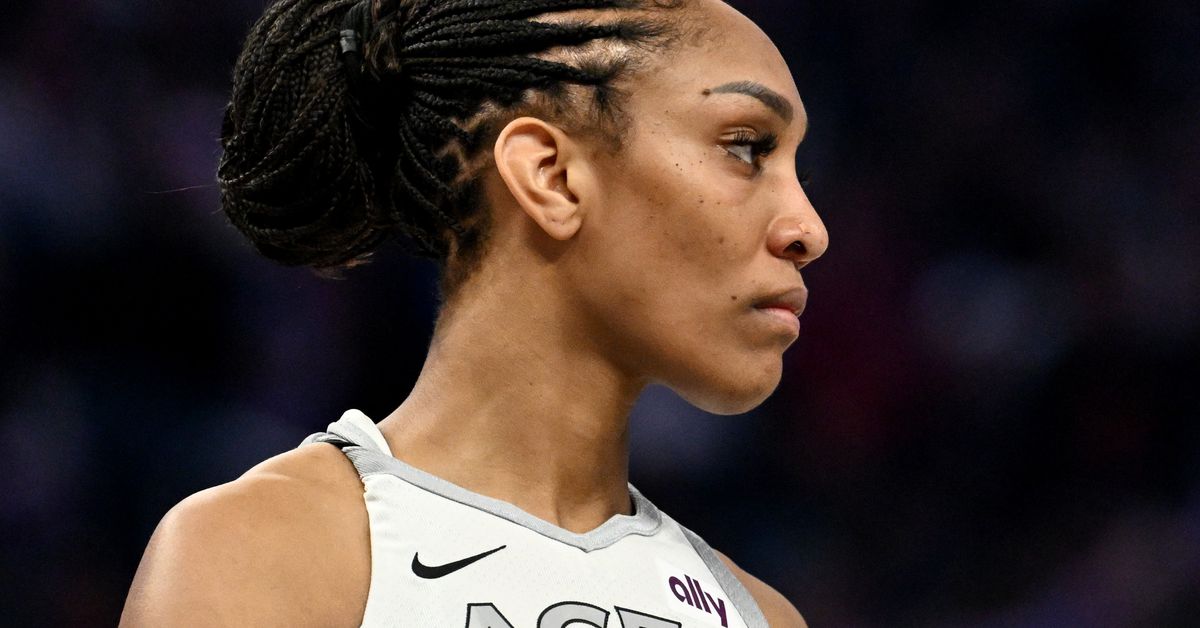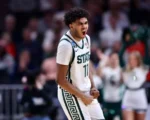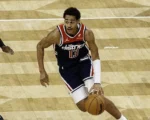As the 2025 WNBA season approaches mid-June, a number of standout performances and key trends have emerged. Let’s check on five developments from the first month of the season.
[embedded content]
A’ja Wilson’s passing
The most significant development in A’ja Wilson’s already elite game has been her dramatic improvement as a playmaker.
Wilson’s assist percentage has jumped from a modest 14 percent last season to an impressive 27 percent this year—the largest season-to-season improvement in that metric since Diana Taurasi’s leap from 2017 to 2018. While assist percentage isn’t a measure of passing ability, this dramatic increase reflects Wilson’s enhanced court awareness and willingness to trust her teammates in crucial moments.
The improvement is most noticeable in her anticipation of double teams. Where Wilson previously would miss passing lanes when help defense arrived, she now is reading defensive rotations before they happen, finding open teammates in the corners and dunker spot. Her processing speed has accelerated dramatically, allowing her to make quick decisions that punish aggressive defensive schemes.
Wilson’s late-game playmaking has reached another level. There was a late-game sequence against the Washington Mystics where she made two clutch reads to complete an amazing comeback. Her ability to recognize when defenses are overcommitting to her scoring and make the correct pass has transformed the Aces’ crunch-time offense, while making her an even more dangerous player.
Jacy Sheldon’s defense
Despite being in just her second season, Connecticut Sun guard Jacy Sheldon has emerged as one of the league’s premier point-of-attack defenders. Her screen navigation and recovery ability have been nothing short of extraordinary, showcasing defensive fundamentals that typically take years to develop.
Sheldon’s greatest asset is her relentless pursuit of ball handlers around screens. Her compact frame allows her to slip through gaps that larger defenders cannot navigate, while her exceptional footwork keeps her attached to even the most crafty offensive players. She consistently fights through multiple screens while maintaining perfect positioning, a skill that has neutralized some of the league’s most dangerous scorers.
What sets Sheldon apart is her recovery ability—her “brakes,” as coaches call them. Even when her momentum carries her away from the play, she demonstrates remarkable body control in redirecting herself back to the ball handler. This recovery speed allows her to contest shots even after being seemingly beaten, disrupting offensive rhythm and forcing difficult attempts.
Her active hands complement her footwork perfectly. She has mastered the subtle art of timing her steal attempts, using swipe downs to create turnovers without fouling. This combination of screen navigation, recovery ability and anticipation has made her one of the most disruptive defensive players in the league.
[embedded content]
Lexie Hull’s offensive improvement
Indiana Fever guard Lexie Hull has developed some new dimensions to her game. Her improvement represents one of the season’s most significant individual developments.
Hull’s finishing at the rim has improved dramatically from an abysmal 40 percent last season to a respectable 62 percent this year—a jump that brings her to league average. More impressively, Hull has developed off-the-dribble creation skills that were virtually nonexistent in her previous professional work.
With Caitlin Clark sidelined due to injury, Hull has seized the opportunity to showcase expanded offensive capabilities. Perhaps most surprising has been Hull’s playmaking improvement. Her court vision and passing accuracy have shown significant growth, as she consistently finds teammates after drawing help defense on her drives. This dual threat capability—scoring and creating for others—has made Hull an early Most Improved Player candidate and provided Indiana with some encouraging offensive support.
A WNBA 3-point revolution?
The WNBA’s 3-point shooting trend has accelerated beyond all expectations, with teams averaging 24.7 attempts per game compared to last year’s record-setting 22.8. This could signal a fundamental shift in how teams approach offensive strategy, with eight of 12 teams from last season increasing their 3-point volume.
While teams like the Golden State Valkyries and New York Liberty are doing most of the heavy lifting, the league-wide adoption suggests this isn’t merely a few outliers driving the numbers. The increased emphasis on perimeter shooting reflects teams’ recognition that 3-point shooting creates more efficient offensive attacks from everywhere else on the floor.
Interestingly, despite the increased 3-point volume, overall offensive ratings haven’t changed dramatically over the past decade. This suggests teams are still learning how to optimize their long-range attacks, with efficiency gains likely coming as players and systems adapt to the increased emphasis on perimeter shooting.
The trend toward increased 3-point shooting typically accelerates as seasons progress, with teams becoming more comfortable with their systems in August and September. If this pattern holds, the WNBA could see even more unprecedented 3-point attempt rates by the end of the season.
Gabby Williams’ shooting
Seattle Storm forward Gabby Williams has undergone a remarkable shooting growth that could reshape her team’s championship aspirations. After struggling from 3-point range throughout her career, Williams is shooting a blazing 50 percent from beyond the arc on five attempts per game.
Williams is displaying the confidence and quick release of an elite shooter. Her catch-and-shoot percentage has been particularly impressive, while her ability to create her own 3-point looks off the dribble has added a new dimension to Seattle’s offense.
The timing of Williams’ breakthrough couldn’t be better for Seattle, a team that has long struggled with perimeter shooting from its guard and forward positions. The spacing she provides as an improved shooter has opened driving lanes for teammates, while also providing crucial floor balance in Seattle’s offensive sets.
Most encouragingly for Seattle fans, Williams’ shot selection has remained disciplined despite her hot start. Rather than forcing difficult attempts, she has taken high-quality looks within the offense, suggesting this improvement could be sustainable throughout the season. If Williams maintains even a portion of this shooting improvement, Seattle transforms from an outside contender into a legitimate championship threat.








